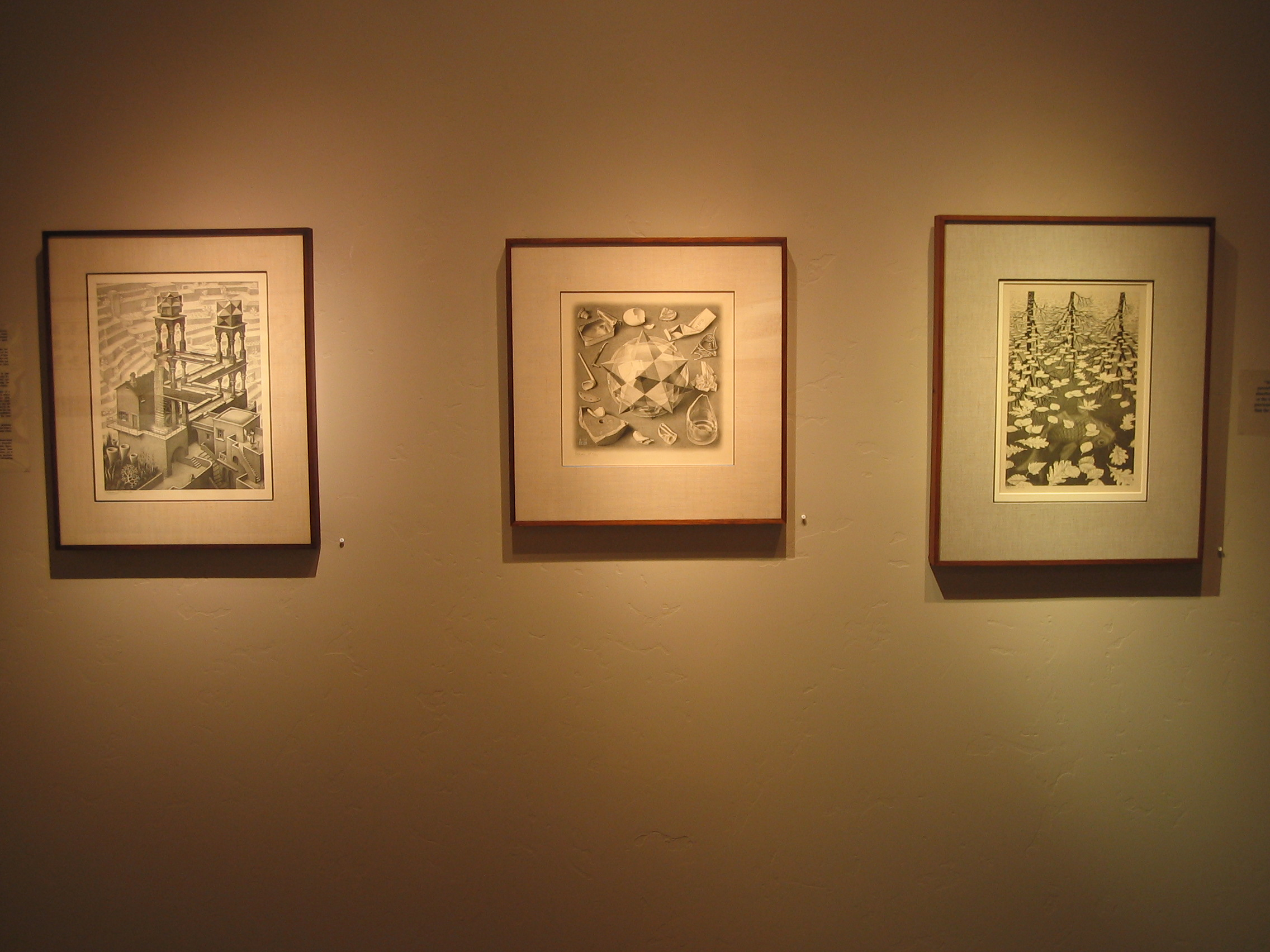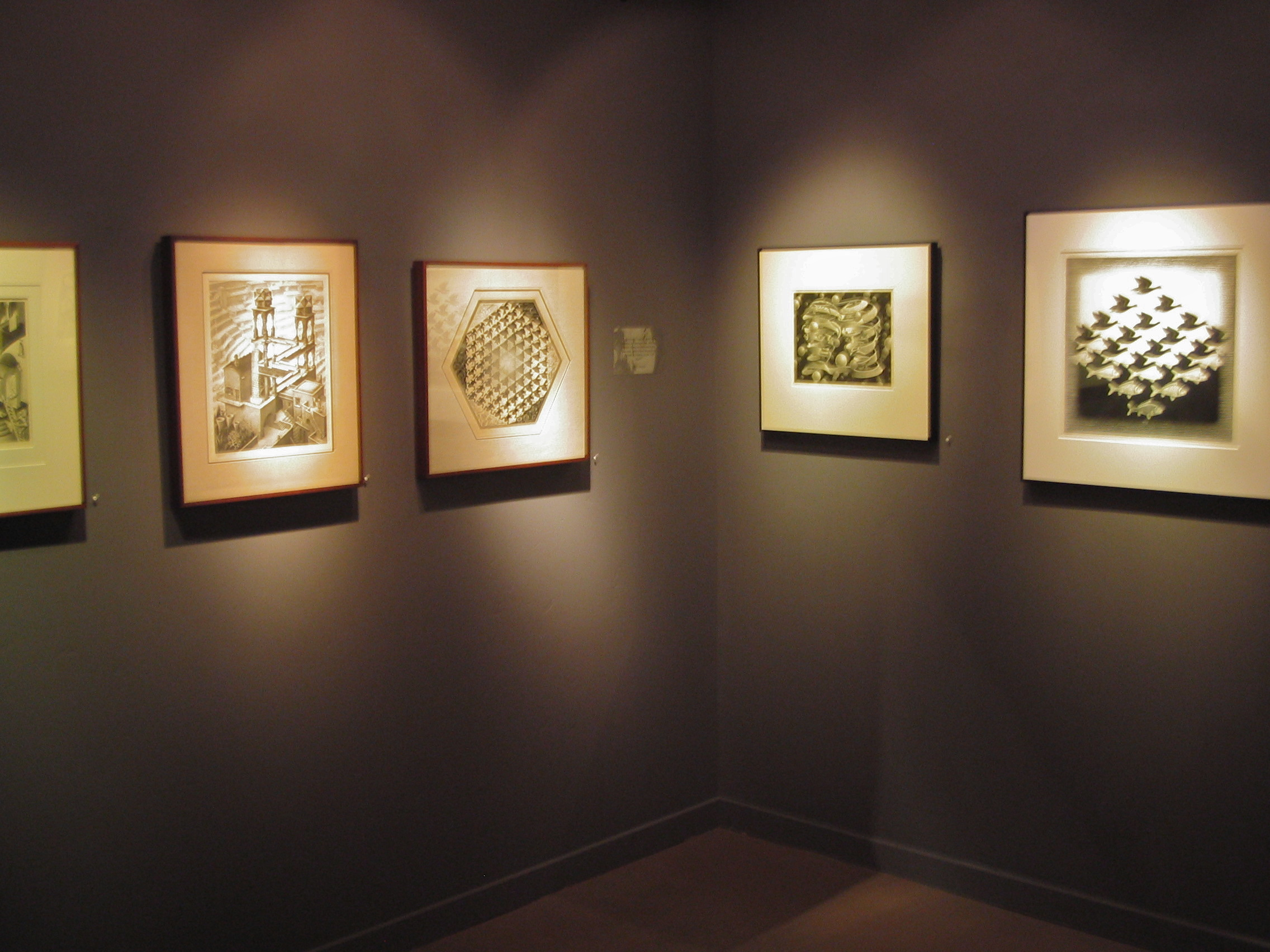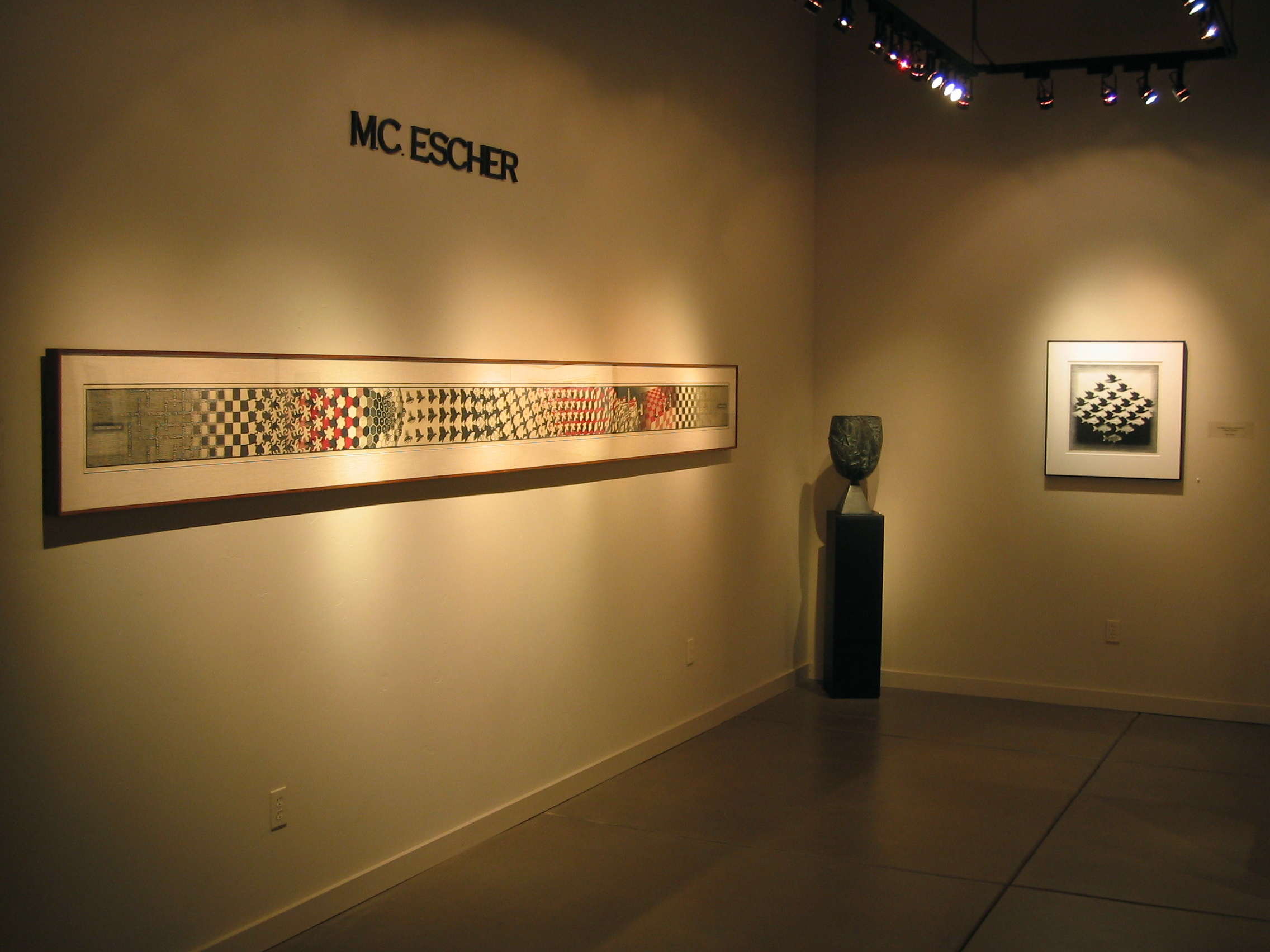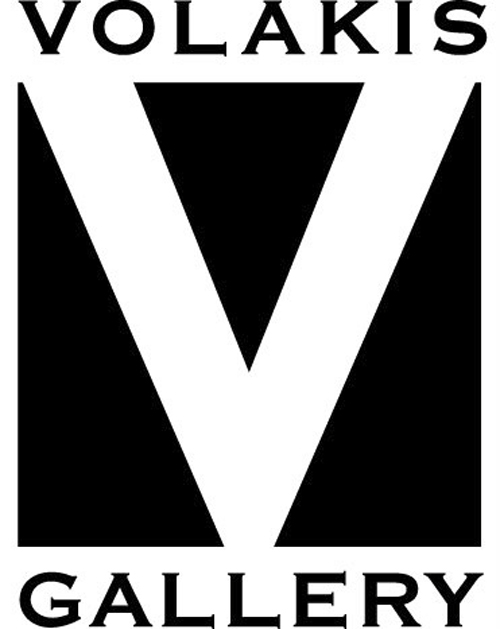MC Escher
SAT SEP 9, 2006 - SUN NOV 5, 2006
The Volakis Gallery will be exhibiting a stunning collection of original works by M.C. Escher. Included in the exhibition is one of Eschers masterpieces, Metamorphosis, a fourteen-foot long wood cut in two colors. Several works from the Emblemata series and the Scholastica series will also be represented. In addition to the two dozen or so wood cuts, several iconoclastic lithographs will be shown including Sky and Water I, Waterfall and an extremely rare piece entitled Verbum which depicts the initial seven days of creation from the biblical creation myth.
Escher’s first print of an impossible reality was Still Life with Street, 1936. His artistic expression was created from images in his mind, rather than directly from observationsandtravelstoother countries. Well known examples of his work also include Drawing Hands, a work in which two hands are shown, each drawing the other; Sky and Water, in which light plays on shadow to morph fish in water into birds in the sky; Ascending and Descending, in which lines of people ascend and descend stairs in an infinite loop, on a construction which is impossible to build and possible to draw only by taking advantage of quirks of perception and perspective.
Escher worked primarily in the media of lithographs and woodcuts. In his graphic art, he portrayed mathematical relationships among shapes, figures and space. Additionally, he explored interlocking figures using black and white to enhance different dimensions. Integrated into his prints were mirror images of cones, spheres, cubes, rings, and spirals. In addition to sketching landscape and na- ture in his early years, he also sketched insects, which frequently appeared in his later work. His first artistic work was completed in 1922, which featured eight human heads divided in different planes. Later in 1924, he lost interest in “regular division” of planes, and turned to sketching landscapes in Italy with irregular perspectives that are impossible in natural form.
Although not having had a training in mathematics, Escher’s understanding of mathematics was largely visual and intuitive. Escher’s work has a strong mathematical component, and more than a few of the worlds which he drew are built around impossible objects such as the Necker cube and the Penrose triangle. Many of Escher’s works employed repeated tilings called tesellations. Escher’s artwork is especially well-liked by mathematicians and scientists, who enjoy his use of polyhedra and geometric distortions. For example, in Gravity, multi-colored turtles poke their heads out of a stellated dodecahedron. The math- ematical influence in his work emerged in about 1936, when he was journeying the Mediterranean with the Adria Shipping Company. Specifically, he became interested in order and symmetry. Escher described his journey through the Mediterranean as “the richest source of inspiration I have ever tapped.”
In 1941, Escher wrote his first paper, now publicly recognized, called Regular Division of the Plane with Asymmetric Congruent Polygons, which detailed his mathematical approach to artwork creation. His intention in writing this was to aid himself in integrating mathematics into art. Escher is considered a research mathematician of his time because of his documentation with this paper. In it, he studied color based division, and developed a system of categorizing combinations of shape, color, and symmetrical properties. By studying these subjects, he explored an area that later mathematicians labeled crystallography, an area of mathematics.
Around 1956, Escher explored the concept of representing infinity on a two-dimensional plane. Discussions with Canadian mathematician H.S. M Coexter inspired Escher’s interest in hyper- bolic tessellations, which are regular tilings of the hyperbolic plane. Escher’s work, Circle Limit I, demonstrates this concept. In 1995, Coxeter verified that Escher had achieved mathematical perfection in his etchings in a published paper. Coxeter wrote, “[Escher] got it absolutely right to the millimetre.” His works brought him fame: he was awarded the Knighthood of the Order of Orange Nassau in 1955. Subsequently he regularly designed art for dignitaries around the world.
Escher also studied the mathematical concepts of topology. Escher learned additional concepts in mathematics from British mathematician Roger Penrose. From the new knowledge he created Waterfall and Up and Down, featuring irregular perspectives similar to the concept of the Möbius; Möbius himself being a mathematician who studied topology.
Escher printed Metamorphosis I in 1937, which was a beginning part of a series of designs that told a story through the use of pictures. These works demonstrated a culmination of Escher’s skills to incorporate mathematics into art. In Metamorphosis I, he transformed convex polygons into regular patterns in a plane to form a human motif. This effect symbolizes his change of interest from landscape and nature to regular division of a plane.
Many well known museums include original works by Escher in their collections. Some leading public collections include the following: The National Gallery in Washington, D.C., The National Gallery of Canada in Ottawa, The Israel Museum in Jerusalem, The Escher Museum at The Hague, The Netherlands, and The Museum of Fine Art in San Francisco. Escher’s work appears in many of the finest private collections including the Schwartz Collection of Boston, the Walker Collection of San Diego, the Vess Collection of Detroit, the Roosevelt Collection of Palm Beach, and the Price Collection of Connecticut.




